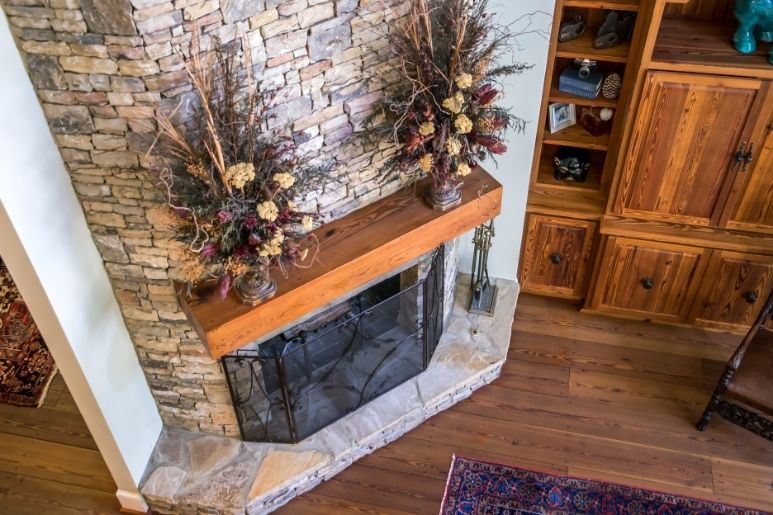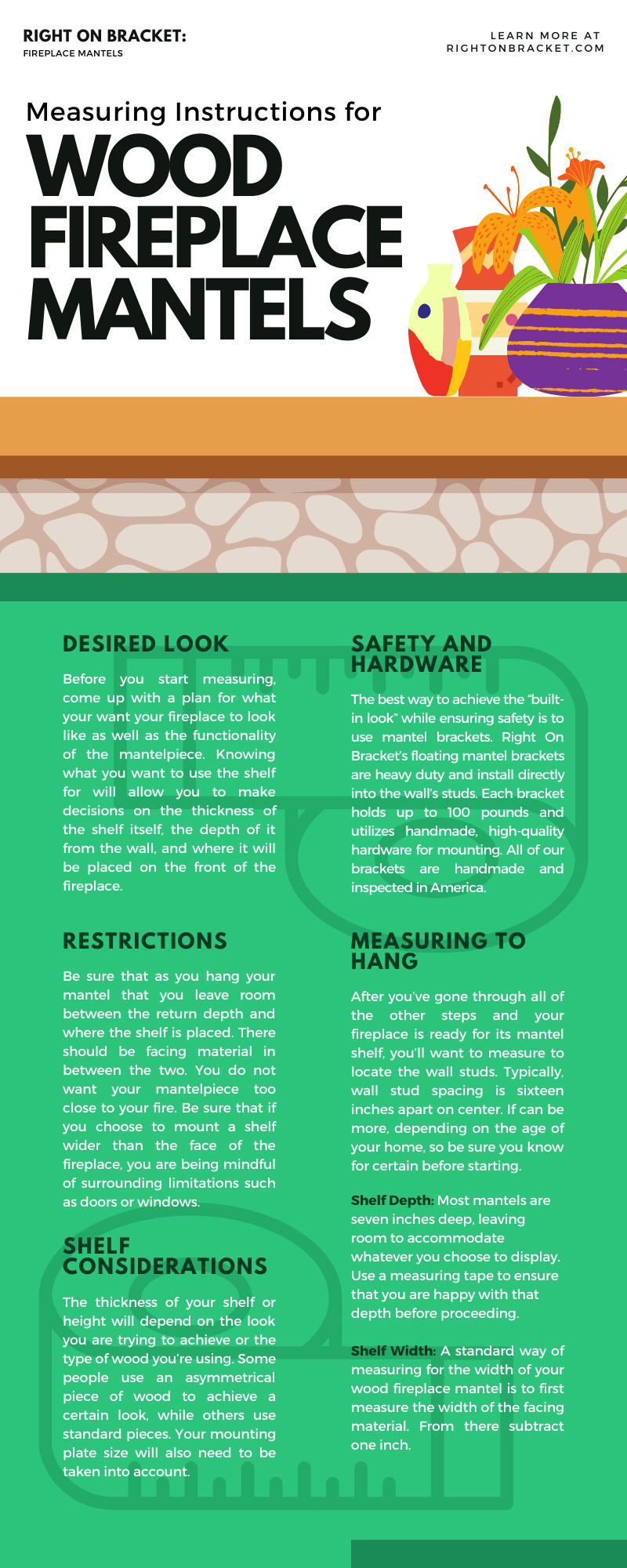
Measuring Instructions for Wood Fireplace Mantels
Whether you’re sprucing up an existing fireplace and mantel or are in the process of building one, you’ll want to follow tips and measuring instructions for wood fireplace mantels before proceeding. This way you have your plan mapped out, you know your measurements, and you will understand what tools are necessary to obtain the finished product.
Desired Look
Before you start measuring, come up with a plan for what your want your fireplace to look like as well as the functionality of the mantelpiece. Will you be displaying framed artwork, photos, décor, a television? Knowing what you want to use the shelf for will allow you to make decisions on the thickness of the shelf itself, the depth of it from the wall, and where it will be placed on the front of the fireplace. You also will want the mounting to be seamless, not brackets on the underside; it should look built in.
Sturdiness
A sturdy mantel shelf, regardless of what it will be used for, is a must. You want to ensure that if anyone sets something heavy on it or a child somehow hangs on it, that it’s not going to come crashing down. Confirming whether gravity, over time, is going to cause the shelf to tip or fall is essential.
Safety
The best way to achieve the “built-in look” while ensuring safety is to use mantel brackets. Right On Bracket’s floating mantel brackets are heavy duty and install directly into the wall’s studs. They then create dowels that stick out of the wall that slide right into your mantel’s drilled holes. Each bracket holds up to 100 pounds and utilizes handmade, high-quality hardware for mounting.
Hardware
Using high-quality mounting hardware is essential to ensure that the mantel is securely fastened to the wall studs. All of our brackets are handmade and inspected in America. Be sure that when determining how many brackets you need, you account for both the weight of the shelf itself and the potential weight that you’ll put on it.
Overlap
As you choose the mantel style for your fireplace, you’ll want to consider whether you want it to be shorter, longer, or the same length as the fireplace face. The mantelpiece can overlap the facing material in several places: the mantel opening height, opening width, and the return depth. Most of the time, the overlap should be no less than a half inch.
Influences
If you’re having trouble deciding on a design for your mantel, take some time and look online. You may search by style, current trends, or even what looks best against specific facing materials such as wood, stone, and tile. You’ll want to determine if you want a standard-size mantel surround and if that will work for your fireplace project. Measuring the fireplace opening height, width, and return depth cavity behind the mantel will give you a clearer idea. If you chose to go that route, using heavy-duty hidden shelf bracketswould help secure it to the wall firmly.
Restrictions
Be sure that as you hang your mantel that you leave room between the return depth and where the shelf is placed. There should be facing material in between the two. You do not want your mantelpiece too close to your fire. Be sure that if you choose to mount a shelf wider than the face of the fireplace, you are being mindful of surrounding limitations such as doors or windows. The great thing about using a floating mantel shelf is you do not have to account for width of the face or hearth length the way you would if you chose to mount a mantel surround.
Measuring to Hang
After you’ve gone through all of the other steps and your fireplace is ready for its mantel shelf, you’ll want to measure to locate the wall studs. Be sure you know where your studs are in the wall, so you know where to drill the holes on the backside of the shelf. Typically, wall stud spacing is sixteen inches apart on center. If can be more, depending on the age of your home, so be sure you know for certain before starting.
Shelf Depth
Most mantels are seven inches deep, leaving room to accommodate whatever you choose to display. Use a measuring tape to ensure that you are happy with that depth before proceeding. You’re measuring from the wall to the front edge.
Shelf Width
A standard way of measuring for the width of your wood fireplace mantel is to first measure the width of the facing material. From there subtract one inch. When you place the mantelpiece, there will be a half inch on each side of it that has overlap facing material.
Shelf Height
You’ll want to make sure that your mantel wood is thick enough to be drilled into for mounting purposes. To install our floating mantel brackets, your drill hole for dowel placement will be between three-quarters of an inch to one inch.
Shelf Considerations
The thickness of your shelf or height will depend on the look you are trying to achieve or the type of wood you’re using. Some people use an asymmetrical piece of wood to achieve a certain look, while others use standard pieces. Your mounting plate size will also need to be taken into account. Just make sure there is enough room to drill the holes you need to mount to your liking.
A lot more goes into measuring instructions for wood fireplace mantels than you might have initially thought. If you have the ability to plan ahead with the construction of your fireplace, building the face around the shelf will make things easier on you. Using floating mantel shelves give such a clean and finished look to both real and faux fireplaces. They offer more flexibility, less hassle, and no need for the building and bulkiness of a mantel surround. The look is more modernized, and if you choose to change the shelf later, it will be much easier to do so.



